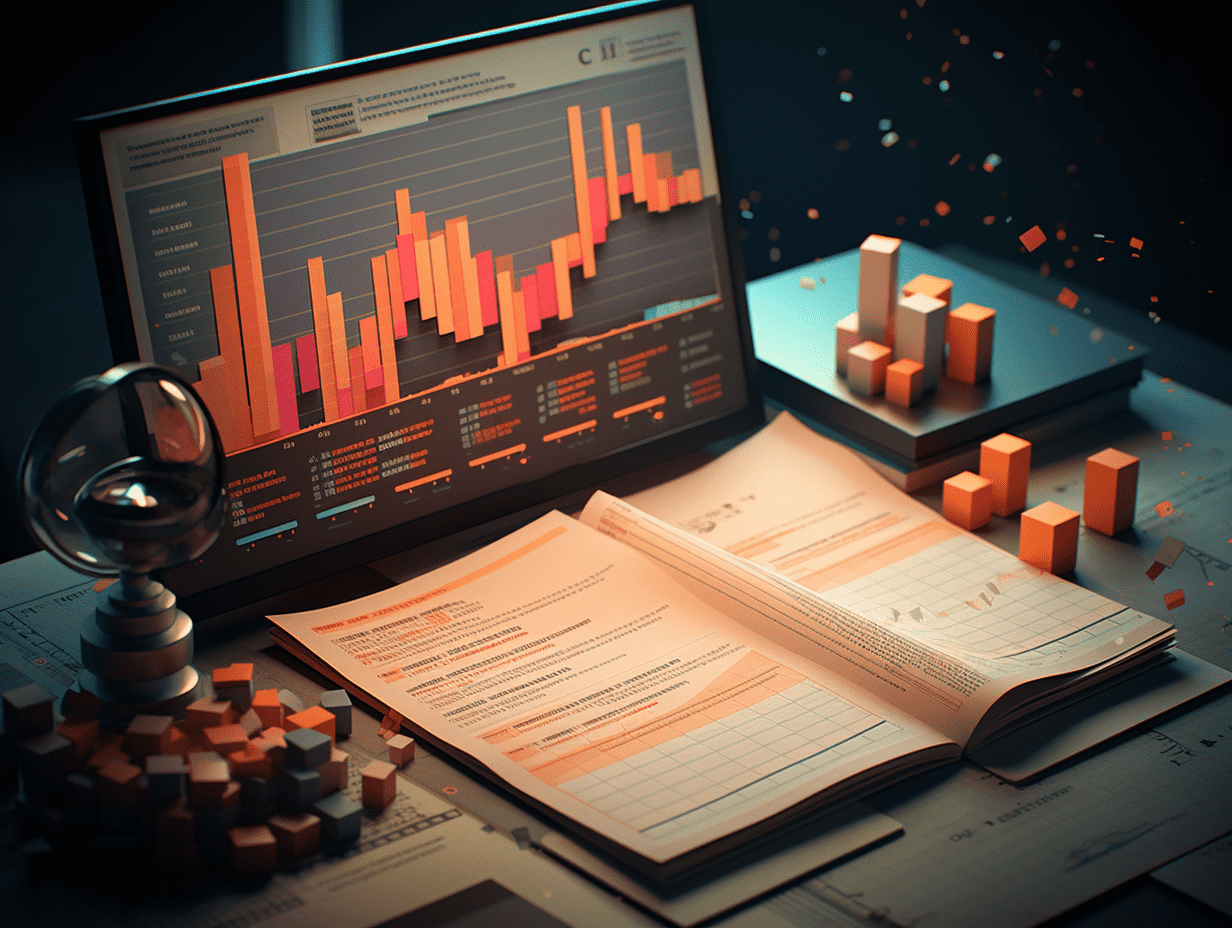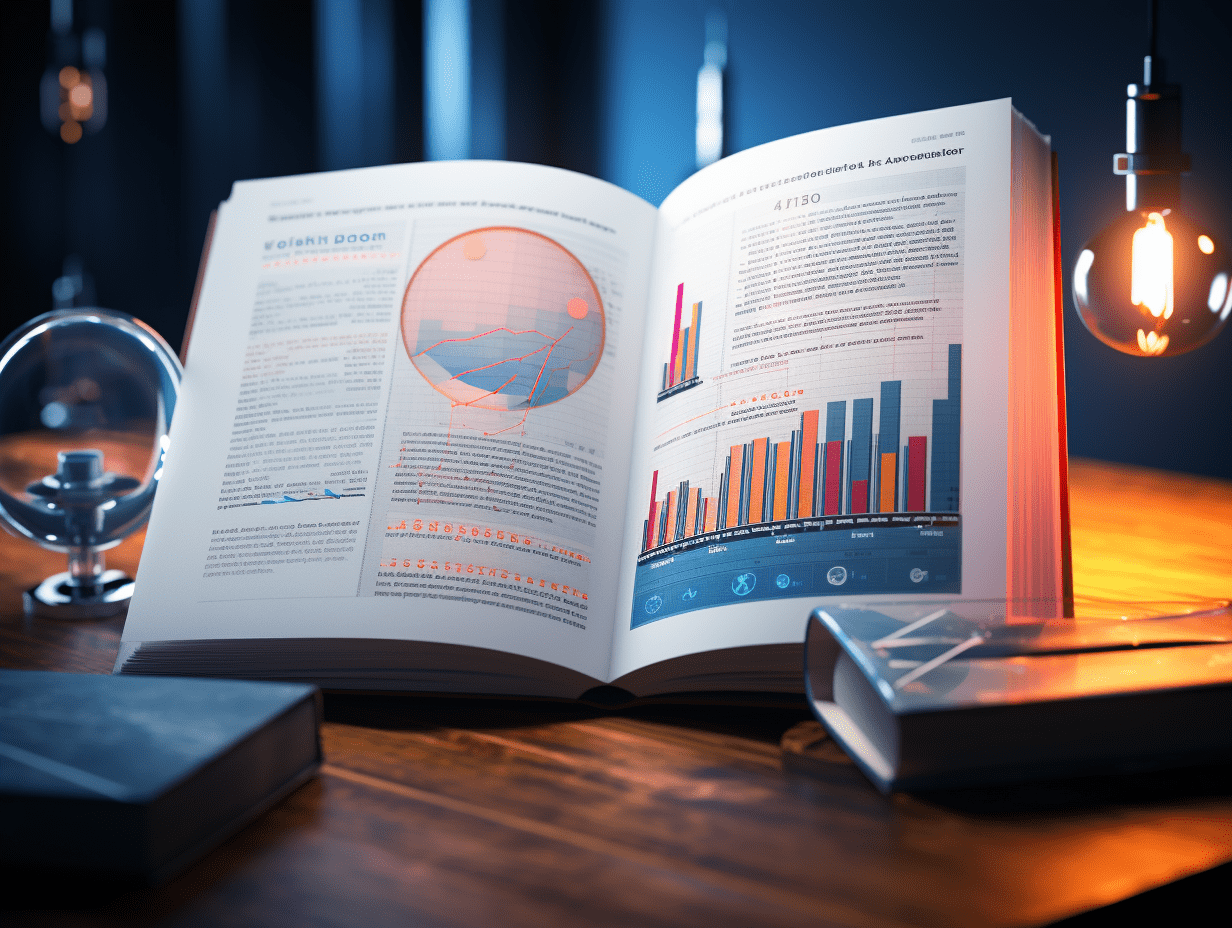AI fierce investment, tariff turmoil, Amazon.com, Inc. (AMZN.US) re-enters the "squatting period"?
On the early morning of May 2nd, after the US stock market closed, Amazon (AMZN.US) announced its financial report for the first quarter of 2024. The performance for the quarter was mediocre, but still better than expected due to being overly conservative.
On the morning of May 2, after the US stock market, Amazon.com, Inc. (AMZN.US) released its first-quarter financial report for 2024, with performance for the quarter being average, but still considered good under conservative expectations. The main concern in the performance was the company's lower profit guidance for the next quarter, indicating a possible decrease in profit margin. Specifically:
1. AWS did not accelerate its growth, but profits greatly exceeded expectations: AWS revenue in the quarter increased by 16.9% year-on-year, a decrease compared to the previous quarter, and lower than market expectations of 17.3%, without the strong performance seen in Azure yesterday.
However, prior to the performance, market expectations for AWS were not high. When compared with the three major cloud computing giants, AWS and GCP have both shown a slowdown in growth trends. Even Azure, which has seen accelerated growth, has been mainly driven by its AI business contribution, while traditional non-AI business contributions have also shown a slight slowdown. From this perspective, the average performance of AWS can be seen as within expectations.
According to some research, AWS seems to have more significant bottlenecks in obtaining high-performance GPUs and new data centers/computing power supplies compared to Azure, which may have limited the release of AI demand (while traditional demand is not good), perhaps one of the reasons why AWS's growth has not accelerated.
2. Although growth was average, AWS's profit greatly exceeded expectations this quarter, with an operating profit margin of 39.5%. This was not a decrease, but instead higher than both last quarter and market expectations for this quarter by 2.6% and 4% respectively. Market expectations had been for AWS's profit margin to decrease due to the company beginning to shorten the server depreciation period from 6 to 5 years in January, and the gradual increase in depreciation caused by high Capex.
In reality, depreciation as a percentage of total revenue did increase by 0.9% to 9.2%, which did increase the drag. However, AWS's profit margin significantly improved, and it is necessary to pay attention to the management's explanation for this increase, and whether there are any one-off positive factors affecting it.
3. Weakness observed in North American and international retail sectors: The total revenue of the retail sector this quarter was $126.4 billion, with a year-on-year growth rate of 6.9%, a decrease of 2.2% from the previous quarter. However, this was partly impacted by adverse exchange rates, and the actual performance was better than market expectations.
Looking at the regions, unaffected by exchange rate impacts, North American retail growth decreased from 9.5% to 7.6%, indicating a weakening consumer demand in the region. International retail business growth also saw a significant drop of 3% to 4.9%, but excluding exchange rate impacts, the actual year-on-year growth was 8%, only a slight decrease of about 1% compared to the North American region.
It can be seen that both North America and international regions where Amazon.com, Inc. mainly operates, are showing signs of weakened growth. The absolute performance may not be good, but it also did not meet the significantly low expectations due to tariff and macroeconomic factors.
4. 1P and 3P retail sectors showed a decline, while advertising and subscriptions were more resilient: Looking at the different sectors of the retail business, 1P self-operated retail and 3P merchant services both saw a decrease in growth rate this quarter under constant exchange rates, with a drop of 2% to 6% and 7% respectively.
Both sectors saw growth rates decrease to single digits percentage, indicating weak consumer demand. The difference in growth rates between the two remained at 1%, showing that the monetization rate of 3P business is no longer significantly increasing, aligning with the company's previous commitment to not increase fees for 3P merchants for 25 years.
In contrast, subscription service revenue demonstrated the inherent stability of its model, with a year-on-year growth of 9.6% that was largely consistent with the previous quarter. Excluding exchange rate impacts, the growth rate actually increased by 1%. Advertising revenue growth also outperformed expectations, with a growth of 17.7%, only slightly decelerating by 0.3% from the previous quarter, and higher than the market's expectation of 16.2%.
Similar to companies like Netflix, Google, and Meta, subscription services in the early stages of macroeconomic deterioration have higher certainty and counter-cyclical ability, while major advertising companies in the first quarter have shown strong growth and significant resilience.
5. In terms of profitability, the company achieved an overall operating profit of $18.4 billion this quarter, slightly higher than the market's expectation of $17.5 billion, and above the upper limit of the previous guidance of $18 billion. Despite the impact of macroeconomic weakness and significant policy changes, the profit performance for the quarter was not bad.
However, when looking at the different sectors, the unexpectedly significant increase in operating profit margin of the AWS business contributed an additional $1 billion to profits above expectations.
In the retail business, the profit in the North American region actually showed a surprising decrease. The operating profit margin for the quarter was only 6.3%, a decrease of a significant 1.7% compared to the previous quarter, falling below the market's expectation of 6.5%. Considering the recent increase in investment in fulfillment assets such as next-day/same-day delivery, the rapid increase in the profit margin of the retail business over the past two years may indeed have (temporarily) ended.
However, the operating profit margin in the international region for the quarter was 3%, remaining stable compared to the previous quarter and higher than the market's expectation of 2.8%. Compared to the mature North American region where economies of scale and profit margin release are already in the mid-to-late stages, the international region may still have significant room for improvement in efficiency and profitability, even if there are short-term disruptions.
6. This quarter, Amazon.com, Inc.'s Capex remained high at $26 billion, slightly lower than the previous quarter but still higher than the market's expectation of $25 billion. This level of investment remains quite significant, similar to Microsoft Corporation's, and indicates continued high levels of expenditure."Put on. Likewise, it is a reassurance pill for the upstream semiconductor and mid-to-lower AI demand."7. For the performance guidance for the next quarter, the company expects a revenue range of 1590 to 1640 billion, with the midpoint consistent with market expectations, implying a year-on-year growth of 9.1%. Considering that the company expects minimal impact from exchange rate headwinds in the next quarter, the growth rate is slightly lower than this quarter, at less than 0.9%. Considering that the impact of tariffs will gradually become apparent in the second quarter, this revenue guidance is still considered good.
On the profit side, the company expects an operating profit for the next quarter of 130 to 175 billion, with the upper limit slightly lower than the market's expectation of 177 billion. Even if we consider the upper limit, the implied operating profit margin for the next quarter is 10.8%, lower than this quarter's 11.8%. This implies that the profit margin for the next quarter will significantly contract. It remains to be seen whether this is due to the unexpected AWS profit margin decline or if the profit margin for the retail business will continue to decrease. Management's explanation is needed.
Dolphin Research's perspective:
In general, Amazon.com, Inc.'s performance in this quarter can be considered average. On the growth side, the overall growth rates in the general retail sector have declined significantly (subscriptions and advertising, although resilient, also show slower growth), and AWS's growth did not show any surprises and did not indicate any acceleration. On the profit side, despite the unexpected increase in AWS profit margins, the company's overall profit slightly exceeded expectations and previous guidance. However, the core profit margin for the retail business in the North American region did show a significant decline, higher than expected. This indicates a transition from a period of profit release back to an investment cycle.
It can be said that this quarter's performance did not have many substantial highlights, mainly because market expectations were suppressed by macroeconomic and tariff impacts, leading to performance expectations being overly conservative, making the actual performance this quarter not as worrying as perceived.
Looking ahead, the company's guidance for revenue growth in the next quarter is not much slower than this quarter, which is promising given the beginning of the release of tariff drag. However, the guidance for profit margin contraction is a negative sign, suggesting that either the profit margin for the retail or AWS business will contract.
At a detailed business level, the market's expectations for AWS can be considered pessimistic. Many sellers do not expect any acceleration in AWS revenue growth for a year. This may be due to the outlook for traditional non-AI demand not being positive, combined with the significant bottleneck in AWS's AI computing power supply.
However, as with the problems facing Azure, as the company continues to increase Capex, the market will continue to question when new investments will lead to additional growth. If AWS indeed fails to demonstrate the crucial signal of "accelerated growth" soon, it will be deemed unacceptable.
The general retail sector is more directly affected by tariffs and macroeconomic consumption factors, and while recent performance has not been as worrisome as initially thought, it is showing signs of general weakness. As long as the risks of tariffs and recession are not fundamentally eliminated, even if the current performance is good, the market may question whether it will deteriorate in the future, demanding cautious observation.
Furthermore, Amazon.com, Inc. seems to want to increase fulfillment investments again in the near term, returning to an expansion cycle, which, although a long-term benefit, will undoubtedly put pressure on the profitability of the retail business in the short term.
Therefore, for Amazon.com, Inc., recent performance lacks significant highlights, is relatively influenced by tariffs and macroeconomic factors, and Dolphin Research believes that Amazon.com, Inc. is entering a period of misalignment between short-term investments and returns. However, the company's long-term competitive barriers remain unchanged, making it still a good company.
The company's current market value corresponds to a PE valuation of approximately 29x the after-tax operating profit for 25 years, considering the current downward trend in profit margins. While this is not considered expensive compared to historical levels, it is still a relatively high valuation from an absolute perspective.
Detailed comments are provided below:
1. AWS: No growth highlights, unexpectedly strong profits
This quarter, AWS's revenue growth rate was 16.9% year-on-year, a decrease of exactly 2pct compared to the previous quarter, and lower than the seller's expectation of 17.3%. This shows that AWS's growth is still disappointing, and in the future, AWS will inevitably face the same issue as Azure the company has invested a large amount of Capex, but when will we see an acceleration in AWS's growth?
Microsoft Corporation fulfilled this important signal in yesterday's financial report, but from the recent performance and market expectations, the market does not have high expectations for AWS to accelerate in the second half of this year.
However, looking at the growth rates of the 3 major cloud computing Hyperscale companies, excluding Azure, the growth rates of GCP and AWS are showing a clear slowdown trend. Even Azure, the main reason for its increased acceleration is the 3pct increase in AI contribution to growth, with the contribution of traditional non-AI business growth also slightly decelerating. From this perspective, the common trend among the 3 major cloud computing companies is that business spending on traditional non-AI demands is indeed weakening.
According to some brokerages' research, AWS faces more obvious bottlenecks compared to Azure in acquiring high-performance GPUs and the supply of new data centers/computing power, so the release of AI demand would be restricted by supply. This is one of the reasons why the market currently generally believes that AWS will have a hard time accelerating in the second half of the year.
However, in terms of profitability, AWS significantly exceeded expectations this time. The operating profit margin for this quarter was 39.5%, not only did not decline, but it also exceeded expectations by 2.6pct compared to the previous quarter and by 4pct compared to market expectations for this quarter.
Since the company announced in January of this year that it would reduce the depreciation period of servers from 6 years to 5 years, and the high Capex would lead to gradual depreciation growth, common sense (also market expectations) would suggest that this quarter's AWS profit margin should have decreased. However, the actual profit margin markedly increased in the opposite direction, and it is necessary to pay attention to management's explanation as to the reasons behind this and whether there are one-time favorable factors at play.
2. Consumer...Actual weak, subscription and advertising are also more resilient than expected.The revenue of the general retail sector this quarter is 126.4 billion, with a year-on-year growth rate of 6.9%, a decrease of exactly 2.2 percentage points from the previous quarter, although there was an impact from exchange rate headwinds, the actual performance is better than market expectations. Looking at different regions, the retail growth in North America, unaffected by exchange rate, decreased from 9.5% to 7.6%, reflecting a weakening consumption trend in the North American region.
The nominal growth of international retail business saw a significant drop to 4.9%, but still better than market expectations of only 3.5%. Excluding exchange rate headwinds, the actual year-on-year growth in international regions is 8%, slowing by only about 1 percentage point, close to the growth rate in North America.
Overall, the growth in North America and international regions, including Europe where Amazon.com, Inc. primarily operates, is showing a clear weakening trend, and the performance is not very good. However, it is not as low as the pessimistic expectations of sellers affected by tariffs and macro factors.
Looking at specific business segments: 1) The self-operated retail business grew by 5% year-on-year, slowing to 6% under constant exchange rates, a 2 percentage point decrease, while 3P seller services revenue also saw a 2 percentage point decrease in growth to 7% under constant exchange rates.
Both 1P retail and 3P business saw a similar slowdown to only single-digit % growth rates. The growth rate difference between the two was only 1 percentage point, indicating that the monetization rate of 3P businesses is no longer increasing, in line with the company's previous commitment not to increase fees for 3P sellers for the next 25 years.
2) Subscription services revenue demonstrated inherent stability in its model, with a year-on-year growth of 9.6% this quarter and remaining relatively flat compared to last quarter. Excluding the impact of exchange rates, the growth rate actually increased by 1 percentage point. This is similar to the logic for companies like Netflix that are currently seen as defensive stocks.
3) The growth in advertising revenue this quarter was stronger than expected, with an actual growth of 17.7%, a slight decrease of 0.3 percentage points compared to last quarter, and significantly higher than market expectations of 16.2%. Due to the slowing growth in 1P and 3P retail revenue, as well as negative macro and policy impacts, market expectations for Amazon.com, Inc.'s advertising revenue were conservative.
However, in reality, similar to the situations of Google and Meta, these major advertising giants' growth in advertising revenue for the quarter was not bad, showing a considerable amount of resilience. Of course, whether they can continue to maintain this growth in the following two quarters remains to be seen.
III. North American retail profit margins decline as expected, with AWS coming to the rescue
Overall revenue growth slowed down due to the overall slowdown in general retail business and AWS not experiencing significant growth either. The company's overall revenue this quarter reached 155.7 billion, a year-on-year growth of 8.6%, slightly better than the expected 8.3%. This performance can be considered neither good nor bad.
In terms of profit, the company achieved an operating profit of $18.4 billion this quarter, slightly higher than the seller's expected $17.5 billion and the upper limit of the previously guided $18 billion. Despite concerns in the market that factors such as weakening consumption and increased investments may lead to lower profits, the actual performance can be considered quite good.
However, looking at the different sectors, the operating profit margin of the AWS cloud business exceeded expectations this quarter, contributing $1 billion more in profit than expected.
In the retail business, the operating profit margin in the North American region was only 6.3%, a decrease of a full 1.7 percentage points compared to last quarter, lower than the market's expectation of 6.5%. Although the market had already anticipated a narrowing of profit margins, the actual situation was even worse. Considering the company's continued investment in fulfillment assets such as next-day and same-day deliveries, the rapid increase in the retail business profit margin over the past two years may have indeed come to an end.
In contrast, the operating profit margin in the international region this quarter was 3%, remaining flat compared to last quarter and higher than the market's expectation of 2.8%. This suggests that compared to the mature North American region where scale effects and profit margin releases have reached the middle to late stages, the international region may still have significant room for improvement in efficiency and profit, despite short-term disruptions.
Looking ahead, as the impact of tariffs is officially reflected in the second quarter, the retail business's profit margin in the mid to short term may indeed continue to narrow, needing to pay attention to whether the AWS business, which exceeded profit margin expectations, can continue to support the overall profit margin of the group without declining.
IV. Some expenses are beginning to expand, Capex and depreciation continue to increase
From the perspective of costs and expenses: 1) This quarter's gross margin is 50.6%, expanding by 1.3 percentage points year-on-year, higher than the expected 50.2%. Combined with a significant increase of 22% in amortization and depreciation this quarter, accounting for 9.2% of total revenue (an increase of 0.9 percentage points compared to last quarter), there was an increase in drag on gross profit. Therefore, this unexpected increase in gross profit margin, along with the significant increase in AWS profit, should have a common cause behind it.
2) From the perspective of expenses, the proportion of fulfillment expenses this quarter has increased by 0.2 percentage points year-on-year instead of declining, indicating that the retail business fulfillment side may have transitioned from profit release to reinvestment again. In addition, the proportion of research and development and content expenses also increased by 0.5 percentage points, reflecting increased investment in AWS and subscription business audiovisual media production.
Marketing and management expenses rates continued to contract year-on-year, showing that in an unfavorable macro environment, the company continues to make efforts to control costs to offset the impact on profitability.
Furthermore, Amazon.com, Inc.'s Capex this quarter remained high at $26 billion (based on the company's cash flow statement disclosure, which has some discrepancies compared to the earnings call, but is generally the same). Although slightly lower than the previous quarter's $26 billion fluctuation, it is still higher than the seller's expected $25.1 billion, continuing to maintain a very high level of investment. This also affects upstream semiconductor and downstream areas.The demand for AI has given us a peace of mind.This article is translated from "Dolphin Research"; Edited by GMTEight: Liu Xuan.
Related Articles

Preview of New Stocks in US Stock Market | Taking $21.78 million in revenue to the US, Jie Microchip aims to become the "water seller" in the construction of the metaverse.

Intel Corporation's (INTC.US) manufacturing strategy accelerates: Countdown to mass production of 18A.

EB SECURITIES: Non-farm data temporarily stable, alleviating market recession concerns.
Preview of New Stocks in US Stock Market | Taking $21.78 million in revenue to the US, Jie Microchip aims to become the "water seller" in the construction of the metaverse.

Intel Corporation's (INTC.US) manufacturing strategy accelerates: Countdown to mass production of 18A.

EB SECURITIES: Non-farm data temporarily stable, alleviating market recession concerns.

RECOMMEND

Berkshire Hathaway Shareholders Meeting Q&A Live: Buffett Talks about Trade, Japan, and Cash Deployment in 2025.
03/05/2025

Why has net profit significantly decreased? Berkshire Hathaway (BRK.A.US) 2025 Q1 management discussion and analysis of financial condition and operating results.
03/05/2025

Buffett's designated successor - Who is Greg Abel? Can he continue the legend of the "Stock God" Buffett?
03/05/2025


